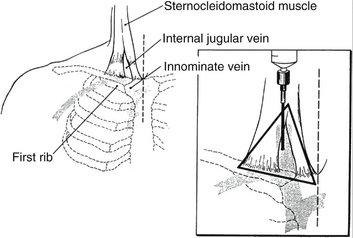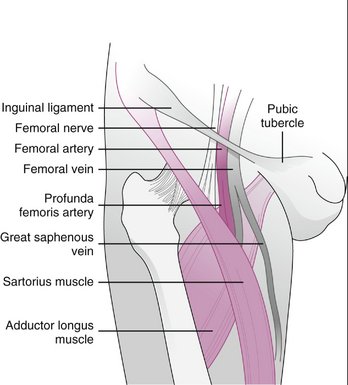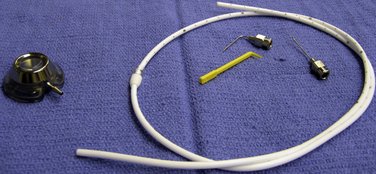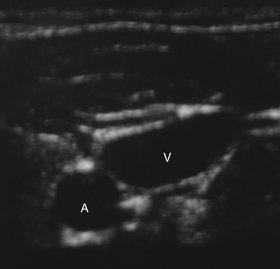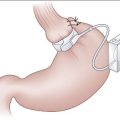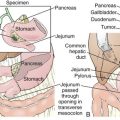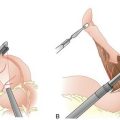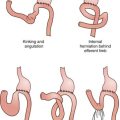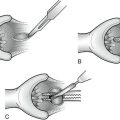CHAPTER 3 Central Venous Catheterization
BACKGROUND
Many catheter types are commonly in use. Multilumen catheters allow for concomitant venous pressure monitoring and infusions, or the infusion of multiple products. Larger-lumen catheters (e.g., Cordis, Miami Lakes, FL) allow for more rapid infusion and are, therefore, useful in the resuscitative setting. Moreover, such catheters can serve as conduits for the insertion of multilumen catheters or pulmonary artery catheters. Catheters designed for long-term access, such as Hickman (Fig. 3-1A) and Broviac catheters, are tunneled under the skin of the chest wall and are equipped with a cuff around which scar tissue forms, holding the catheter in position. Implantable ports facilitate long-term, intermittent access (e.g., weekly chemotherapy). These devices have a reservoir that is implanted in a subcutaneous pocket and can be intermittently accessed by needle puncture through the skin (Fig. 3-1B).
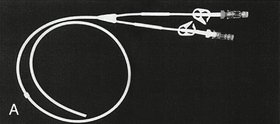
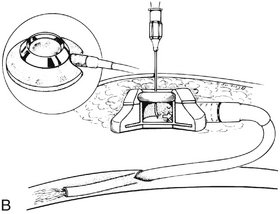
Figure 3-1 Hickman catheter (A) and accessed implantable port (B).
(A, From Marx J, Hockberger R, Walls R: Rosen’s Emergency Medicine: Concepts and Clinical Practice, 6th ed. Philadelphia, Mosby, 2006; B, From Hoffman R, Benz E, Shattil S, et al: Hematology: Basic Principles and Practice, 4th ed. Philadelphia, Churchill Livingstone, 2005.)
INDICATIONS FOR CENTRAL LINE PLACEMENT
PREPROCEDURE EVALUATION
COMPONENTS OF THE PROCEDURE AND APPLIED ANATOMY
Patient Positioning and Preparation
Internal Jugular Vein Approach
Subclavian Vein Approach
A rolled towel is placed under the scapulae. Local anesthetic is delivered to the subcutaneous tissues and the periosteum of the clavicle. The introducer needle (i.e., a large-gauge, hollow-bore needle) is attached to a syringe and is inserted 2 to 3 cm inferior to the midpoint of the clavicle. The needle is advanced under the clavicle toward the sternal notch until blood return is visualized in the syringe (Fig. 3-3).
Femoral Vein Approach
Seldinger Technique
Implantable Port Placement
COMPLICATIONS
Graham AS, Ozment C, Tegtmeyer K, Lai S, Braner DA. Central venous catheterization. N Engl J Med. 2007;356:e21.
Kusminsky RE. Complications of central venous catheterization. J Am Coll Surg. 2007;204:681-696.
Lefor AT, Gomella LG. Bedside procedures. In: Mann B, Lefor A, Gomella L, editors. Surgery On Call. 3rd ed. ColumbusOH: McGraw Hill; 2001:342-380.
McGee DC, Gould MK. Preventing complications of central venous catheterization. N Engl J Med. 2003;348:1123-1133.

